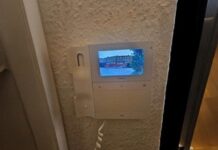
Johan Cruijff ArenA will utilise innovative video analytics to improve visitor flow, optimise parking utilisation and offer fans an anonymous way to provide feedback about the stadium experience, among other uses. The Security & Safety Things IoT platform for smart cameras will integrate into the ArenA’s operational software to provide key insights into stadium operations and ongoing health and safety measures, especially useful since the pandemic. The partnership will provide a potential model for other organisations looking to deploy technology solutions to safely reopen.
Security and Safety Things GmbH and Johan Cruijff ArenA are partnering up and will deploy S&STs IoT platform for smart surveillance cameras to enhance overall fan experience, optimise ArenA operations and increase visitor security and privacy. The ArenA is home to AFC Ajax and the internationally renowned Amsterdam Innovation ArenA (AIA), a living lab established by the ArenA and the City of Amsterdam to enable development and testing of innovative stadium and smart city solutions.
The Security & Safety Things (S&ST) IoT platform and network of cameras is integrated into the ArenA’s dashboard software to provide information and analysis for safety and security as well optimisation of stadium operations and visitor engagement. “Every technology selected for our innovation environment is strategic because of the potential benefits not only to our ArenA, but to the City of Amsterdam and other stadiums and large event venues seeking technological solutions to help to re-open safely and operate their facility more intelligently,” said Sander van Stiphout, Director International, Johan Cruijff ArenA.
Sander van Stiphout adds, “The unique flexibility of the Security & Safety Things approach enables us to simultaneously deploy COVID-19 health and safety analytics along with business optimisation tools and easily re-equip the cameras with other analytic applications as our needs change.” A series of smart cameras on the S&ST IoT platform are installed in key areas throughout the stadium. Using specialised, Artificial Intelligence-enabled video analytic applications from the S&ST Application Store that run directly on each camera, each device will provide the ArenA with valuable operational insights.
When the stadium reopens, crowd detection analytics will monitor social distancing compliance and visitor flow around entrances and food or merchandise kiosks. License plate recognition cameras will assist with real-time occupancy monitoring for parking and traffic flow optimisation. Queue detection applications can be employed to reduce visitor wait times by directing fans to less busy areas and by providing the insights required to optimise staffing levels at peak times.
In one specific area, a camera also provides the ability for visitors to provide feedback about their stadium experience in an anonymous and contact-free way by detecting the visual of a ‘thumbs-up’ or ‘thumbs-down’ from a visitor, collecting only the rating without disrupting people flow. “The flexibility of our smart camera platform and the ArenA’s mission of innovation are very well matched to produce the intelligence necessary to address real world issues of privacy, health and safety but also new and creative ideas for stadium and event management,” said Hartmut Schaper, Chief Executive Officer (CEO), Security & Safety Things GmbH. Hartmut adds, “We’re honoured to be joining the Johan Cruijff ArenA as an innovation partner and to help them provide a seamless and safe visitor experience.”
The camera system and how it is used complies with all European and Dutch privacy regulations. Furthermore, there are various advantages to this camera system, when it comes to privacy. These cameras are equipped with powerful processors that analyse the images directly on the camera, reducing the need for a constant video stream to be passed on to a central location, where it can be monitored or further processed.
Instead, the cameras can be configured to send only the information about relevant events such as when a long queue is forming, groups of people gather too closely, or individuals are not wearing face coverings as required. Only then will respective images be passed along. This reduces the processing of visitors’ personal information to an absolute minimum as opposed to a traditional set-up where all footage is transmitted and centrally processed at all times.











